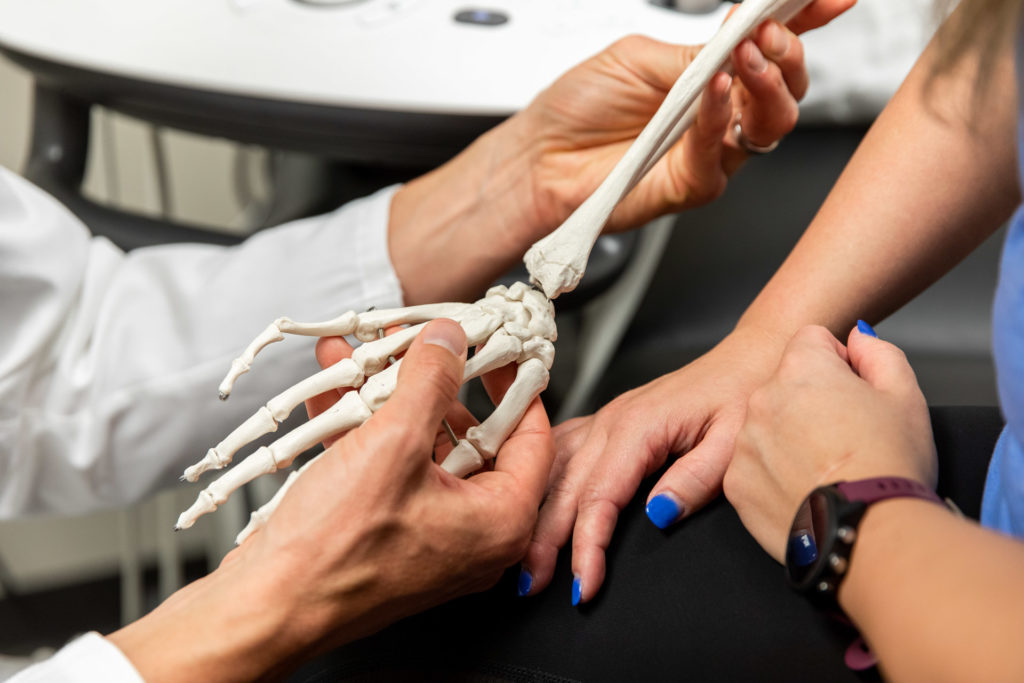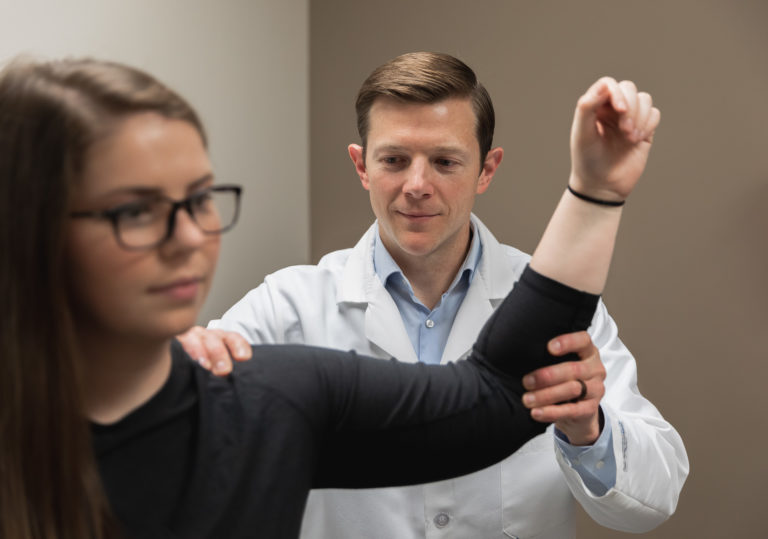
After Carpal Tunnel Surgery
What happens after surgery?
A sterile dressing will be applied to the hand. If the dressing stays on until the post-operative appointment 10-14 days after surgery, it is best to just leave it on. Sometimes the plastic film will start to peel off the hand. If this happens, remove the entire dressing so that you are looking at the stitches, then cover the incision with a rectangular bandage that has adhesive on all four sides. Many people find that waterproof bandages work well, as they allow you to shower without getting the incision wet. Change that bandage daily, but do not apply any ointment. This tends to make it too moist and can lead to delayed healing.
You may be given a prescription for pain medication to be used as needed. You may supplement that with over-the-counter medication such as ibuprofen or naproxen. You should receive a list of exercises to do starting on postoperative day one. These exercises can also be obtained online by searching for “six-pack hand exercises.” The instructions for use of the hand following surgery are simple: If an activity hurts, stop doing it, but if it doesn’t hurt it is OK. Many people find that lifting, pushing, pulling and twisting activities may cause some discomfort. With the exception of possibly causing the incision to open up, there is little risk of damaging what is done during surgery.
Additional follow-up appointments will depend on how things are going as of the first post-surgical appointment. Many patients will not need additional appointments, although if any problems crop up, I certainly want to see you again.
Recovery times following carpal tunnel release are variable. Some people have very little pain, while others are bothered for several months. Most people, however, report that at least 80% of incisional discomfort has resolved by six weeks after surgery. The return of strength is variable but can sometimes take up to four to six months to stabilize. While most patients do not require formal physical therapy, there are certain indications for a short course of formal therapy. Two of these indications are persistent pain or weakness.
Can carpal tunnel syndrome recur?
The rate of recurrence of carpal tunnel syndrome is less than 5%. The rate tends to be related to the age of the patient at the time of the surgery, with an increased risk of recurrence in younger patients simply due to the fact that they generally live longer.
 About the Author: Brian Divelbiss, M.D. is a board-certified orthopedic surgeon specializing in conditions of the hands, wrists and upper extremities. To provide useful information about carpal tunnel syndrome, Dr. Divelbiss answers commonly asked questions from patients below.
About the Author: Brian Divelbiss, M.D. is a board-certified orthopedic surgeon specializing in conditions of the hands, wrists and upper extremities. To provide useful information about carpal tunnel syndrome, Dr. Divelbiss answers commonly asked questions from patients below.
The medical information contained in the Dickson-Diveley Orthopaedics website is provided to increase your knowledge and understanding of upper extremity problems or other orthopaedic conditions. This information should not be interpreted as recommendation for a specific medical or surgical treatment plan. As each patient may have specific symptoms or associated problems, the treatment regimen for a specific patient may not be the proper treatment for another.
Gaining knowledge and understanding of a particular problem or condition is the first step in any medical treatment plan. I believe the information presented on our website will be helpful for those individuals experiencing a painful hand condition, upper extremity disorder, or other related problems. However, this information is not intended to replace the advice of your family physician. You are encouraged to consult with your physician to discuss any course of treatment presented or suggested.


